The story of legendary fashion designer Gabrielle ‘Coco’ Chanel comes to Melbourne’s NGV
Famous for the timeless ‘Little Black Dress’, fashion icon ‘Coco’ Chanel was revolutionary in creating practical, elegant clothing for women. Her remarkable story is now on show in Melbourne.
Lifestyle
Don't miss out on the headlines from Lifestyle. Followed categories will be added to My News.
As Melbourne reaches back into its wardrobe to re-emerge from the pandemic doldrums, it is black on black on black that still remains our sartorial stereotype.
Taking a walk down the Paris end of Collins St after dinner and a show, it’s still 50 shades of black everywhere, the colour which has evolved into our city’s style DNA
The LBD (Little Black Dress) seen on the street is a timeless classic, created nearly 100 years ago by legend Gabrielle ‘Coco’ Chanel.
She was most certainly one of the world’s greatest influencers, long before the term was coined into a social media marketing buzzword. Strong, influential figures have silently guided nearly every consumer’s decisions for as long as society has existed.
“Women not only loved her fashion, they also wanted to look like her and live like her,” said Miren Arzalluz, director of the Palais Galliera and co-curator of the National Gallery of Victoria’s summer blockbuster, Gabrielle Chanel: Fashion Manifesto.
“She is most definitely the first woman, but really the first designer, to become her own brand.”

Gabrielle Chanel made black chic, no longer worn only in mourning after the horrors of the First World War but transformed into effortless elegance. And she pared women back to the simplicity of the silhouette.
American Vogue described the LBD as “the Chanel Ford - the frock that all the world will wear”.
The LBD was the style-equivalent of Henry Ford’s T-model car, yet its worldwide fashion impact retained its exclusivity.
“I imposed black; it’s still going strong today, for black wipes out everything else around,” Chanel was quoted as saying.
“When I find a colour darker than black I will wear it. But until then I am wearing black.”
Arzalluz, an art historian who studied political history before moving to fashion curation, said the myth and mythology surrounding Chanel was as interwoven as her black double C logo, one of the most recognisable symbols of the 20th century.
“There are so many beautiful quotes attributed to her,” Arzalluz said. “We just don’t know, sometimes it is impossible to verify if she said something or not.”
Her death aged 87 was said to be as stylish as her creations. “You see, this is how you die,” she was said to have told her maid, Celine, after returning from a walk with a friend. But again we verge into the legend that is Coco Chanel.
Opening on December 4, the NGV’s major exhibition marks the international debut and staggeringly the first true retrospective of the famous French couturiere’s work.
Premiered and developed by the Palais Galliera, with loans from the Direction du Patrimoine de Chanel, the fashion house’s heritage department, it features more than 100 garments tracing her remarkable career.
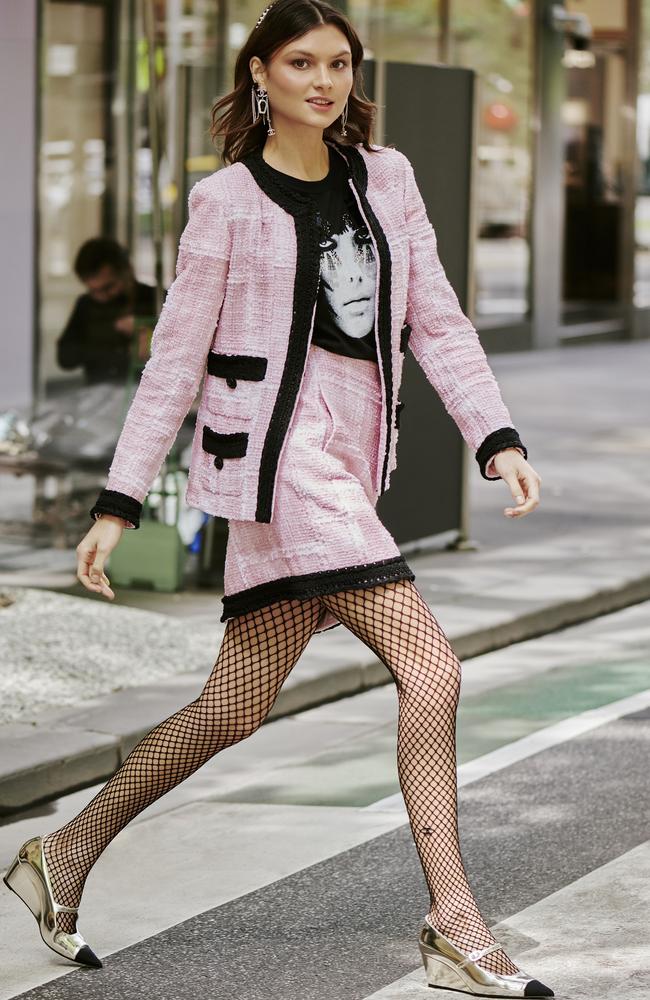
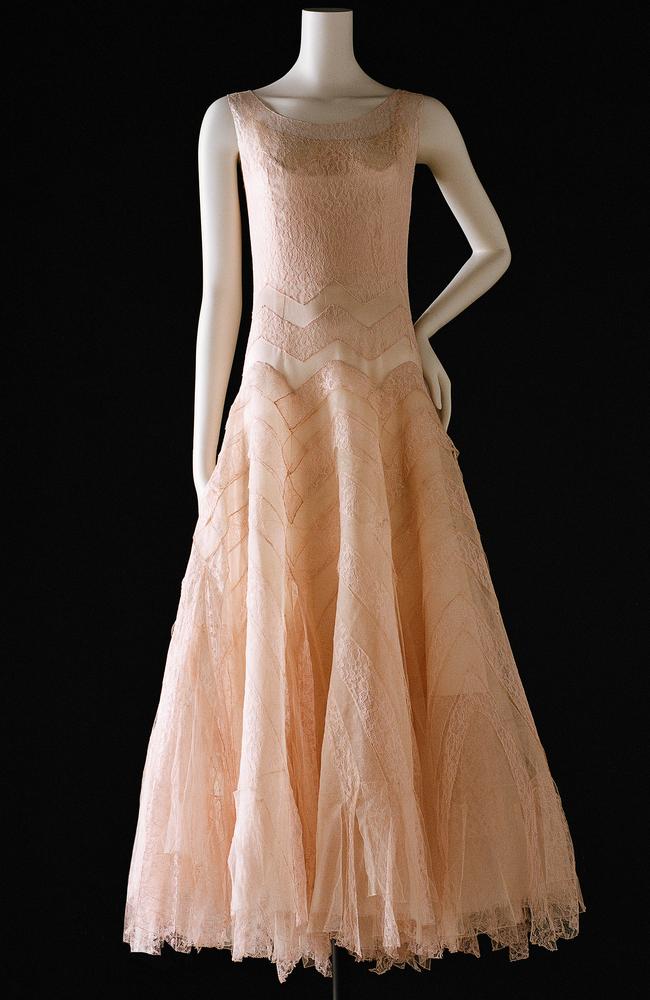
Delicate lace gowns, intricate beading and wool jerseys to tailored tweed suits highlight Chanel’s impact on contemporary culture and the evolution of the modern woman.
What the expansive exhibition is seemingly at pains not to do, is romanticise the legend of Gabrielle Chanel through her relationships in reference to her work.
Around this point of the interview the impeccably tres chic Arzalluz says she must pardon her French.
It wasn’t when asked about Chanel’s documented Nazi leanings and whether we can ever separate the woman from the design.
It was the focus of more than 100 biographies, documentaries and films that have delved into her private life and relationships.
“One thing that bothered me in all the biographies and storytelling around her is she seems to have achieved things, thanks to the men whom she had relationships with,” Arzalluz said.
“That really pissed me off, because you wouldn’t say that kind of thing of a male artist.
“When you read even the most recent biographies about her, she discovered jersey thanks to her lover, Boy Caplan, or she discovered tulle thanks to the Duke of Westminster — it was always the men with whom she had personal relationships that accompanies everything she has done.
“You never read that interpretation when you talk about male artists.
“Many publications have already dealt with Gabrielle Chanel’s biography, which is now very well documented, but this is not the case for her work, her creations. The public is not aware of her contribution to the history of fashion.
“I totally agree with this view of having to address the person as a whole and not only the artist. We would have done this in any other case, but Chanel seemed so exceptional in that everybody knows her life story.
“We were inspired by her. We thought let’s make a radical decision. That was the reason why we didn’t want to do this official story telling and concentrated on her achievements as a woman designer.”

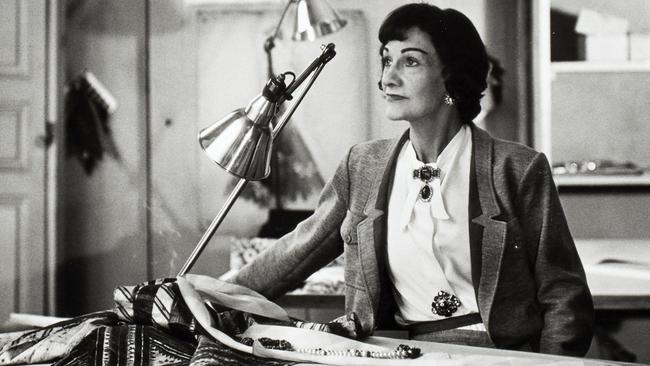
Both Arzalluz and NGV curator of fashion and textile Danielle Whitfield said Chanel’s enduring influence was her ability to defy the conventions and norm of the day.
Enter the tailored tweed twin suit. The iconic two-piece has became a staple for the storied brand, sustained by Karl Lagerfeld until his death in 2019 and followed suit by Virginie Viard, the newest creative director for the house of Chanel.
Gabrielle Chanel: A Fashion Manifesto explains how in 1925 Chanel introduced the original idea for the suit at a small show in her salon on Rue de Cambon in Paris to minimal fanfare.
Whitfield said it was not until after World War II when newcomer Christian Dior exploded onto the scene, unveiling his first couture collection of cinched in waists and full skirts that the Chanel twin suit was propelled back into fashion.
Ultra feminine, Dior’s structured silhouette was a leap away from the austerity of the Second World War.
Carmel Snow, then editor of Harper’s Bazaar, was said to have told Dior, “It’s quite a revolution, dear Christian! Your dresses have such a new look!”
Chanel had choice words for her rival, saying: “Dior doesn’t dress women, he upholsters them.”
Whitfield says Chanel wanted women to exude elegance while allowing them to move freely. So annoyed by Dior’s “new look” she came out of retirement in 1954 at the age of 71.
“When she came back to fashion she was already in her 70s in 1954,”Arzalluz said. “Everyone thought she was dead. The criticism in Paris of her first collection was very harsh. People said she didn’t understand her time, it was out dated and they didn’t understand her modernity. They soon understood.”
The suit we still identify with today was the opposite of Dior’s “new look.”
“She really did it twice, she proposed something radically different, radically simple, radically comfortable and it became essential to the 20th Century,” Whitfield said.
“Her modernity is one of the things people really enjoy in this exhibition. How contemporary everything looks and how difficult it is sometimes to date the dresses you are looking at because they look so contemporary and you can wear them all.
“That’s her force, her timelessness as well. The timelessness of her creations and her principles really.”
Function matched elegance, said Whitfield. After designing timeless little black dresses, tweed tailoring and quilted bags, Gabrielle Chanel completed her wardrobe essentials with the first, now iconic two-toned shoe in 1957, still a signature of the house.
Credited as one-part utilitarian and two-parts chic, the shoe instantly became a staple for being comfortable enough to wear during the day and elegant enough to wear out at night.
Or take the humble pocket. Arzullaz said it was Chanel who put pockets “everywhere from the very beginning. You see in her portraits she almost always had her hands in her pockets.

“Hands in pockets look relaxed and cool in public, a privilege of men until recently in history.
“Women with all these corsetted, stiff silhouettes, they were the opposite of relaxed. That was not fashionable. You had to look like a flower pot.
“She also broke this rule, it was not only garments from the masculine wardrobe but also their attitude and freedom she tried to conquest.
“Yes it is just a pocket, but it is revolutionary in this sense.
“The pocket story we love to tell, because it was so revolutionary when it comes to women’s freedom to look and behave as you want, be comfortable in the clothes you are wearing, pockets are part of this story.”
It is Gabrielle Chanel the rule breaker that is perhaps the most alluring, at a time in history when the female seems to have again found her voice, growing louder and more confident as glass ceilings continue to shatter.
Despite liberating women from their corsetted constraints, freeing them in movable jersey, a fabric only used in men’s undergarments and more, Gabrielle Chanel is not associated with feminism.
But again the mythology around Coco begins to take hold. Arzalluz said some “horrible comments” in some late interviews about hemlines and mini skirts gave rise to the idea of her being conservative.
But she said Chanel was the pioneer of the modern woman.
“I really believe she would have always not only adapted to her time but take the lead, I have no doubt about that,” said Arzalluz
“She had no taboos, she used materials that were never used in fashion especially in couture, she used colour that no one was wearing, she broke all the rules and she succeeded, it was crazy.”
Just look at the portraits on the exhibition’s walls said Arzalluz.
“You see wearing boots that you would normally wear to the countryside. This lady in her 70s was wearing boots. She was the master of all these striking combinations that we do all the time today. We wear our sneakers with skirts now as if it was something very new, but not really.”
Again Chanel was trailblazing this notion of self-image to her brand, just without selfies and social media.
“She was the first to use her own image in publicity,” Arzalluz said. “You see her modelling her own creations, it is quite extraordinary to think she modelled her own designs.
“Gabrielle Chanel devoted her long life to curating, perfecting a promoting a new kind of elegance based on freedom of movement, a natural and casual pose, a subtle elegance that shuns all extravagance, a timeless style for a new kind of woman. That was her manifesto.”
Top five Gabrielle Chanel Fashion Manisfesto moments
Direct from Paris’s pre-eminent fashion museum, this major retrospective of the visionary work of Gabrielle ‘Coco’ Chanel – featuring 230-plus garments, some never before seen – jewellery, make-up and accessories makes its international debut as the NGV’s summer blockbuster.
1. Red silk velvet and marabou-lined evening cape (1924-26)
Bought by Australian collector, Krystyna Campbell-Pretty, for $125,737 as a gift for the National Gallery of Victoria after a furious bidding war, the shirred red silk velvet and marabou-lined ‘Evening cape’ (circa 1924-26) is a highlight.
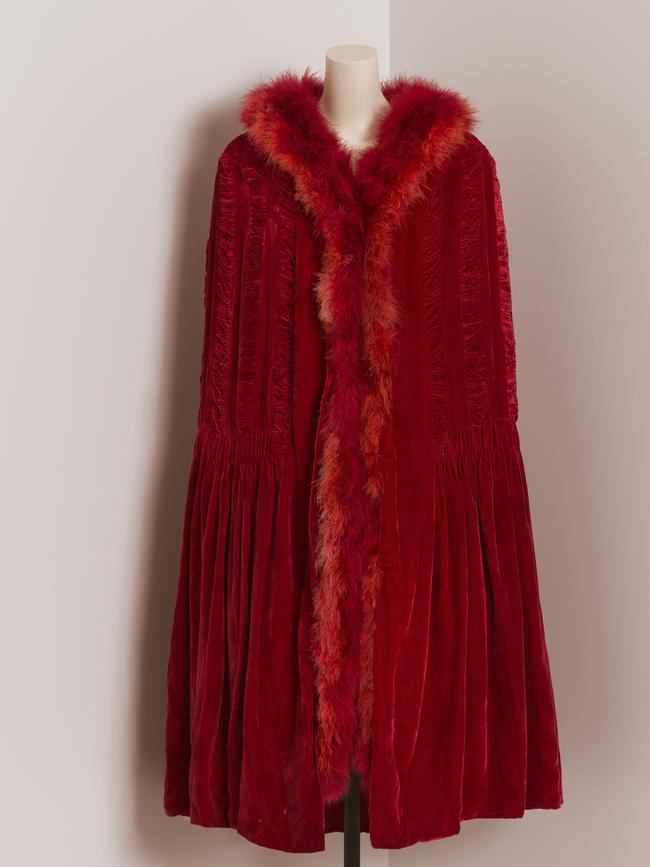
2. Millinery, 1917, early years
Gabrielle Chanel began her career as a milliner, before opening boutiques in the French seaside towns of Deauville (1912) and Biarritz (1915) inspired by the spirit of freedom that characterised upper-class social life. She was pictured modelling her own millinery in Paris in magazines before the first World War making her the first to use her own image in publicity.
3. Chanel No. 5 perfume antique bottles
When asked what she wore to bed, Marilyn Monroe famously quipped, “I only wear Chanel No. 5”. Celebrating its 100th anniversary this year, the perfume was the invisible accessory of the modern woman, becoming a signature of the house and the world’s best-selling perfume. From 1924, Chanel also introduced make-up ranges and from 1927, skincare products that responded to the needs of women’s changing lifestyles. These included lipsticks, compact powders, massage oils, travel soaps and in 1932, tanning oils, an acknowledgment of the growing trend for sunbathing.
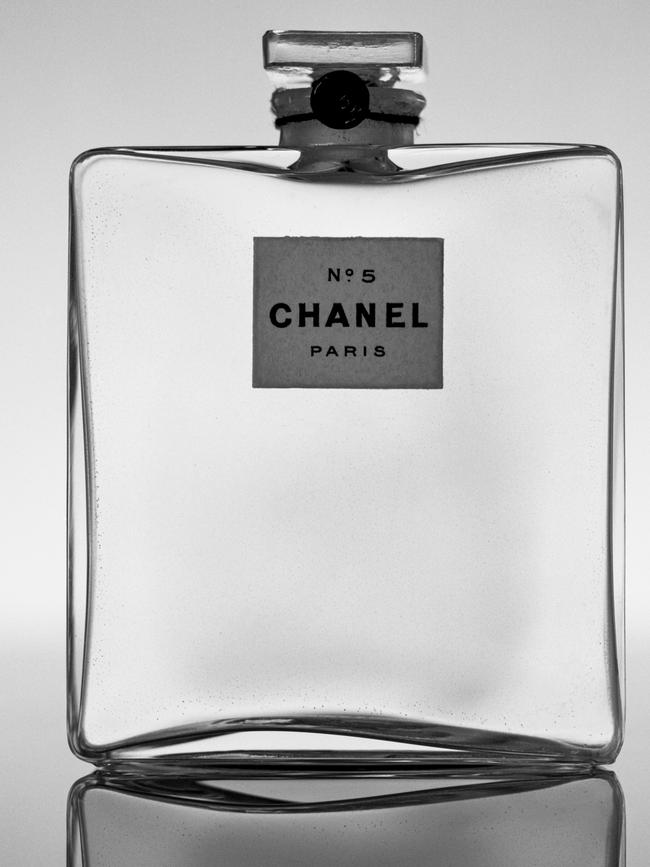
4. Costume jewellery
Not just the famous pearls. As early as the 1920s jewellery played a central role in Chanel’s creations. She combined real and faux gemstones, pearls and metals to create a variety of forms that worked to offset the simplicity of her clothing and challenge established fine jewellery conventions. Highlight works featured in the exhibition are two gold brooches with large coloured cabochons owned by former Harper’s Bazaar editor Diana Vreeland.
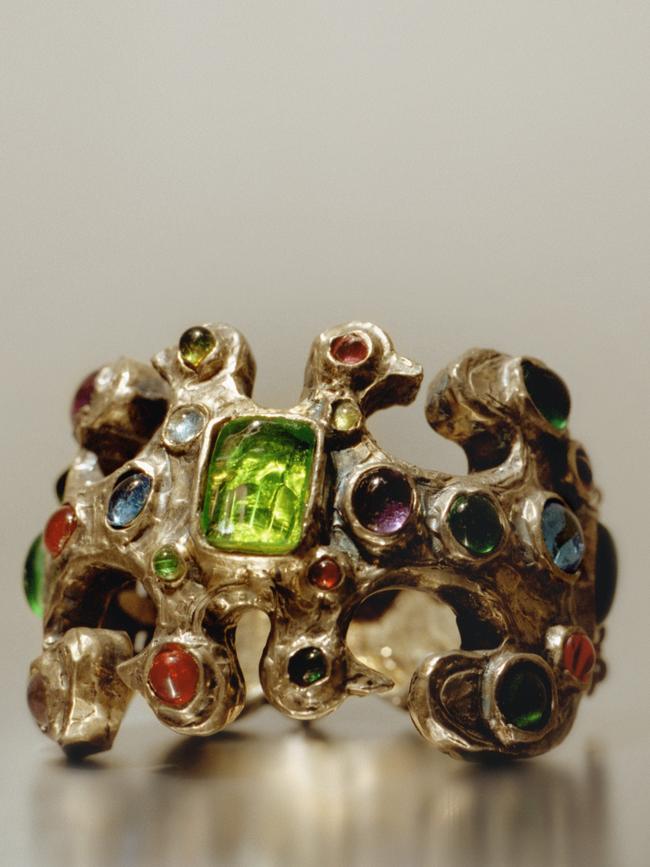
5. Evening dresses
In the words of House ambassador and actor Margaret Qualley (daughter of actor Andie MacDowell) the intricate, yet simplistic garments are even more exquisite when seen up close and personal.
“These dresses are so delicate and can’t be worn as they’re museum artefacts,” Qualley said regarding the upcoming exhibition. “But maybe that’s better, because they get to be worn by everybody who sees them.”
“I’m excited they’re traveling to Melbourne so that they’ll have a whole new set of admirers”.
Gabrielle Chanel: Fashion Manifesto in on from December 4 to April 25 at NGV International, 180 St Kilda Road, Melbourne, for details and to book go to ngv.vic.gov.au




